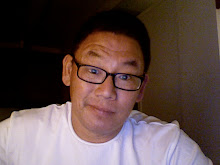 I live on what comes down to the art neighborhood of Phnom Penh. Across the street from the house is the National Museum, and next door to it is the University of the Fine Arts. Every building has several art shops in it. Most of the art would be the equivalent of velvet Elvises, but there are some remarkable pieces. My own landlord has a shop on the first floor where she has a number of granite pieces and some very interesting wood carvings of Apsara dancers. You might remember that Apsara is the classic dance form nearly lost during the Pol Pot regime because the dancers were were executed. Only a few dancers remained here and in the US. They were able to resurrect the art and it lives today here on Street 178.
I live on what comes down to the art neighborhood of Phnom Penh. Across the street from the house is the National Museum, and next door to it is the University of the Fine Arts. Every building has several art shops in it. Most of the art would be the equivalent of velvet Elvises, but there are some remarkable pieces. My own landlord has a shop on the first floor where she has a number of granite pieces and some very interesting wood carvings of Apsara dancers. You might remember that Apsara is the classic dance form nearly lost during the Pol Pot regime because the dancers were were executed. Only a few dancers remained here and in the US. They were able to resurrect the art and it lives today here on Street 178. Next door to my building young women are carving wooden sculptures for sale. Technically, this street is called "Making Rubber Stamp" street. The concept is one that includes carving, sculpting and engraving as well as making rubber stamps for businesses.
Next door to my building young women are carving wooden sculptures for sale. Technically, this street is called "Making Rubber Stamp" street. The concept is one that includes carving, sculpting and engraving as well as making rubber stamps for businesses.Almost all the young people on the block are engaged in some art creation. Most of what I see is simply Buddhist art forms.

Some large pieces are carved by handtools and later by using circular saws. On the left you can see a large Buddha as a monk, and then closer to the men a statue of the Hanuman's monkey army who saved India and its religions from devastation.
The young man seated at the bottom picture is putting final touches with a hand chisel and will later circular saw the statue of the Buddha. By tradition every business has a granite marker in front of its headquarters. Since the Vietnamese departed many businesses have dealings with English speaking foreigners hence almost every business sign in Phnom Penh is in both Khmer and English..... sad, but true. The only signs you don't see in both are the engravings on the walls of Buddhist facilities, many noting donor's names and membership dates in the various organizations.

There are a few remnants of the businesses for which the street is famous. And they do actually make rubber stamps. YOu can get one made in less than twenty minutes in either English, Khmer, Chinese or French. Just in case you've forgotten your native tongue :*)


No comments:
Post a Comment